Hello folks. Hope you all are staying safe from the deadly CoVid- 19 virus. We have just returned from a trip to Austria and Hungary. I’m feeling bored in my room in Bangalore and hence I decided to put up a mid- week post today. The world is continuing to suffer from the worst effects of the pandemic. However, there is some positive news from Europe as the number of cases in the once- worse states of Spain and Italy are now decreasing and these countries are fully moving towards the path to recovery. United States and Brazil continue to be on the top of the list followed by Russia. India has now moved to fourth on the list ahead of Spain and United Kingdom. Who is responsible for the increase in the cases in a country which has taken the most precautions? People themselves are responsible for spreading the infection in their race. Let me skip the statistics of countries which have recovered from the virus in today’s post. We’ll discuss that in the week- ending post which will be published in the next couple of days. Coming to the emergence of cases in recovered countries- Eritrea has reported two more cases while Belize has also reported one new case. The situation has worsened in Suriname with the number of active cases being more than 100 and another death being reported. Let us start today’s post by offering our prayers to these countries. As mentioned in the previous post, we are moving out of Europe for few days. However, we are moving to a country which is one of the earliest European settlements. Today, we are travelling to Malaysia to visit the historic cities of the Straits of Malacca. Let us start our tour of Melaka and George Town.
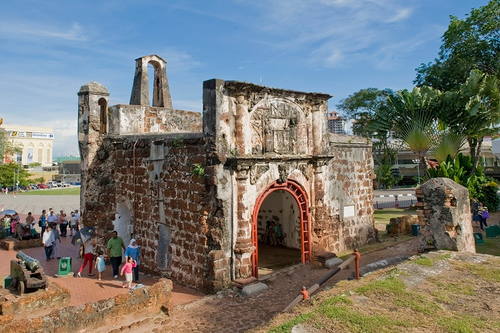
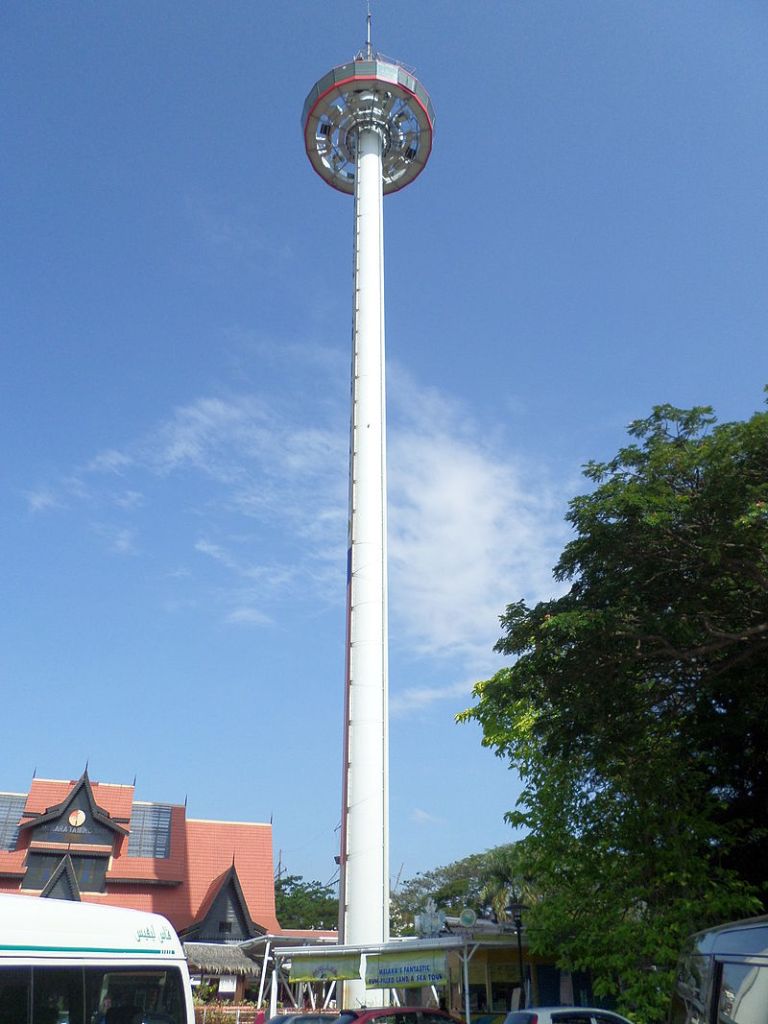
Malacca City (Malay: Bandaraya Melaka or Kota Melaka) or Melaka, is the capital city of the Malaysian state of Malacca. It is the oldest Malaysian city on the Straits of Malacca, having become a successful entrepôt in the era of the Malacca Sultanate. The present-day city was founded by Parameswara, a Sumatran prince who escaped to the Malay Peninsula when Srivijaya fell to the Majapahit. Following the establishment of the Malacca Sultanate, the city drew the attention of traders from the Middle East, South Asia, and East Asia, as well as the Portuguese, who intended to dominate the trade route in Asia. After Malacca was conquered by Portugal, the city became an area of conflict when the sultanates of Aceh and Johor attempted to take control from the Portuguese. Following a number of wars between these territories, Aceh declined in influence while Johor survived and expanded its influence over territory previously lost to Aceh in Sumatra when Johor co-operated with the Dutch who arrived to establish dominance over Java and Maluku Islands. However, due to royal internal strife between the Malay and Bugis, the Johor-Riau Empire was divided into the sultanates of Johor and Riau-Lingga. This separation became permanent when the British arrived to establish their presence in the Malay Peninsula. The Dutch, who already felt threatened in the presence of the British, began conquering the Riau-Lingga Sultanate along with the rest of Sumatra, while Johor came under British influence following the signing of the Anglo-Dutch Treaty of 1824. When the British succeeded in extending their influence over the Malay Peninsula, the city soon became an area of development under the Straits Settlements as part of the British Empire. The development and burgeoning prosperity were, however, halted when the Japanese arrived in World War II and occupied the area from 1942 to 1945. During the occupation, many of the city’s residents were taken and forced to construct the Death Railway in Burma (present-day Myanmar). After the war, the city was returned to the British and remained as the capital of Malacca. According to legend, the site that is now Malacca City was named Malaka when Parameswara, a Sumatran prince arrived there. While he was resting under a tree known as a Malacca tree, he saw his warrior’s hunting dogs were challenged and kicked into a river by a tiny mouse deer. Amused by this, he chose to name the site Malaka after the tree under which he was sitting. When the city came under Portuguese administration, its name was spelled “Malaca”, under Dutch administration as “Malakka” or “Malacka”, and under British rule, “Malacca”. The Straits of Malacca were named after the city at the time of the Malacca Sultanate.
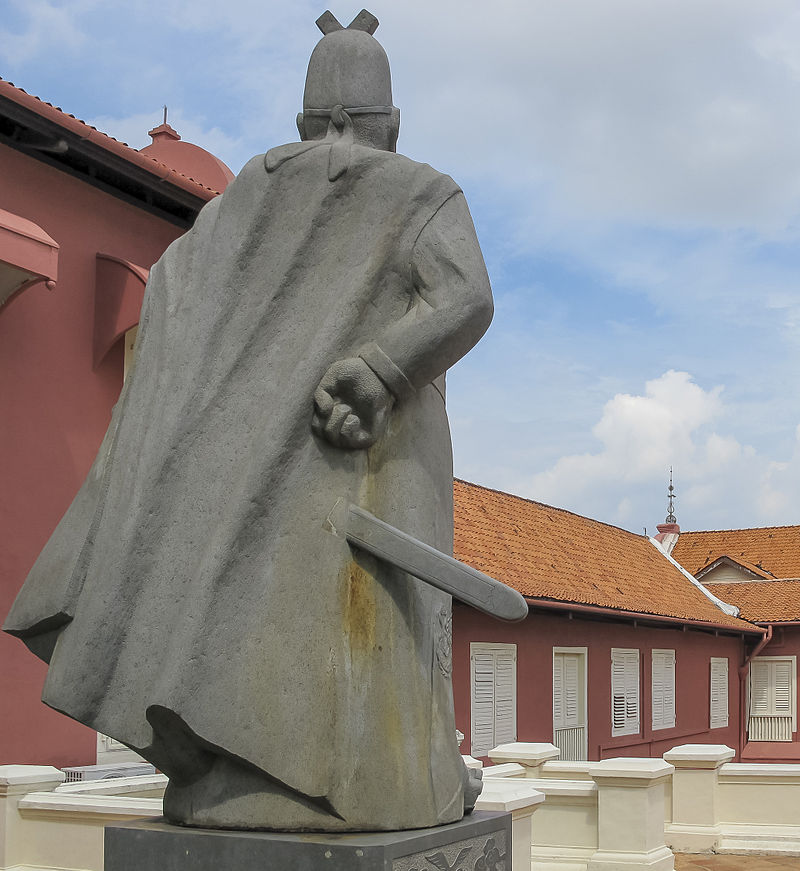
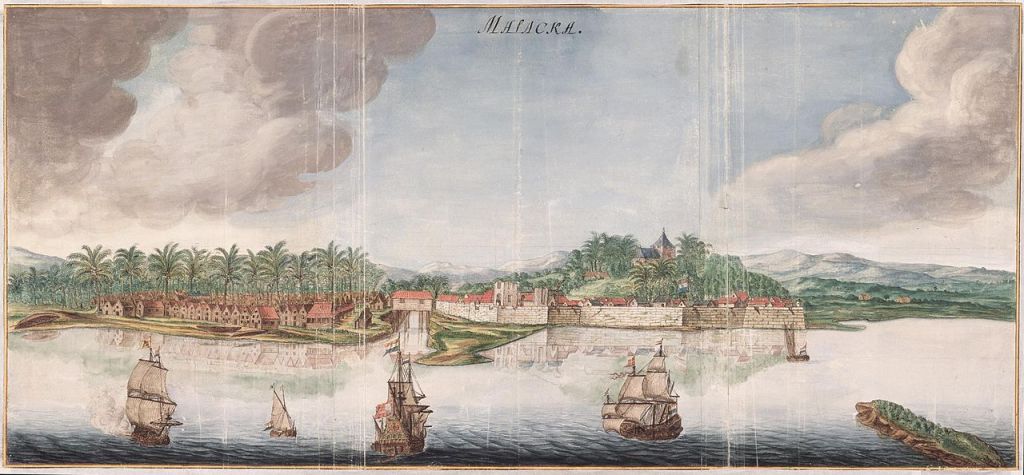
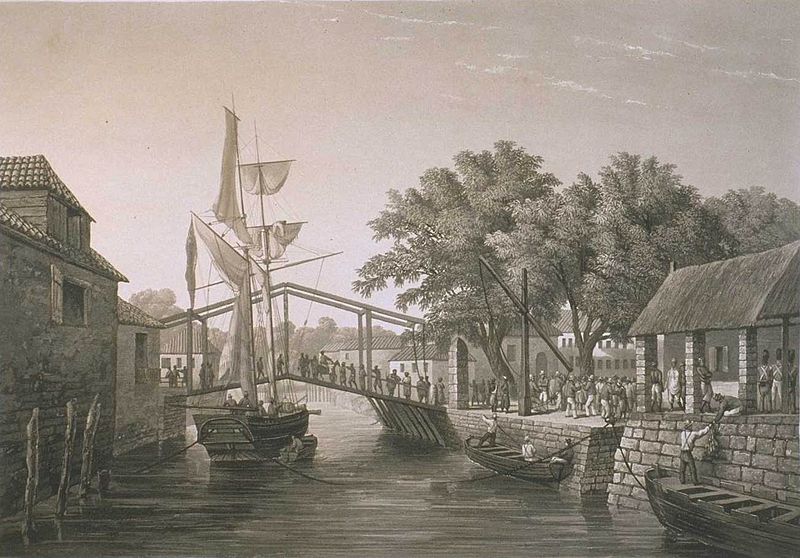

Malacca was established when Parameswara, who had escaped from Palembang in Sumatra, decided to build a new kingdom following Malay Srivijaya’s fall in 1377 after being attacked by Javanese Majapahit. Before he reached the site, he arrived in Temasek, which he decided to make the centre of the new Malay Kingdom’s administration. But when Parameswara lived there, he killed Temagi, a Regent of Singapura who served under the Siamese King to take over the throne from Temagi. Fearing further reprisals by Siam when the news reached the Siamese Kingdom, Parameswara decided to move to a new place. After he left Temasek, it was attacked by Majapahit. Parameswara then headed to the north of Malay Peninsula and arrived at Muar, where he tried to establish another new kingdom at either Biawak Busuk or Kota Buruk, but found the locations unsuitable. Parameswara continue his journey to the north, where he reportedly visited Sening Ujong (now Sungai Ujong) before arriving at a Malay fishing village at the mouth of Bertam River (now Malacca River). He decided to stop there to rest. While he was resting under a tree, he saw his follower’s hunting dogs fighting with a small mouse deer before they were kicked into a river by the deer. Amused by this, he thought the place he rested must be an unusual place; following this event, in 1396 he announced the place would be called Malaka. Soon, the site became the centre of the Malay world in the 15th and 16th centuries and the most prosperous entrepôt in the Malay Archipelago. In 1403, the first official Chinese trade envoy led by Admiral Yin Qing arrived in Malacca. Later, Parameśwara was escorted by Zheng He and other envoys in his successful visits. Malacca’s relationships with Ming granted protection to Malacca against attacks from Siam and Majapahit and Malacca officially submitted as a protectorate of Ming China. This encouraged the development of Malacca into a major trade settlement on the trade route between China and India, Middle East, Africa and Europe. To prevent the Malaccan empire from falling to the Siamese and Majapahit, he forged a relationship with the Ming dynasty of China for protection. Following the establishment of this relationship, the prosperity of the Malacca entrepôt was then recorded by the first Chinese visitor, Ma Huan, who travelled together with Admiral Zheng He. On his descriptions, he wrote;
Malacca was a well-established city surrounded by a palisade with four gates and watch towers. Inside the walled towers was a second fortification, a kind of citadel, within whose confines were the merchants’ godowns, the treasury and food storehouses. The Malacca River divided the city into two almost equal halves, the southern half being the inner citadel and the ruler’s compound and the northern half, reached by a bridge some distance from the river mouth, containing the residents of many foreign merchants. The bridge and its approaches comprised the main venue for all commercial kinds. Constructed on the bridge was about a score of market stalls: an easy location for small watercraft to reach with their loads of produce and also close to the docks where foreign sea-going vessels unloaded goods for transhipment.— Ma Huan, Chinese Muslim voyager and translator.
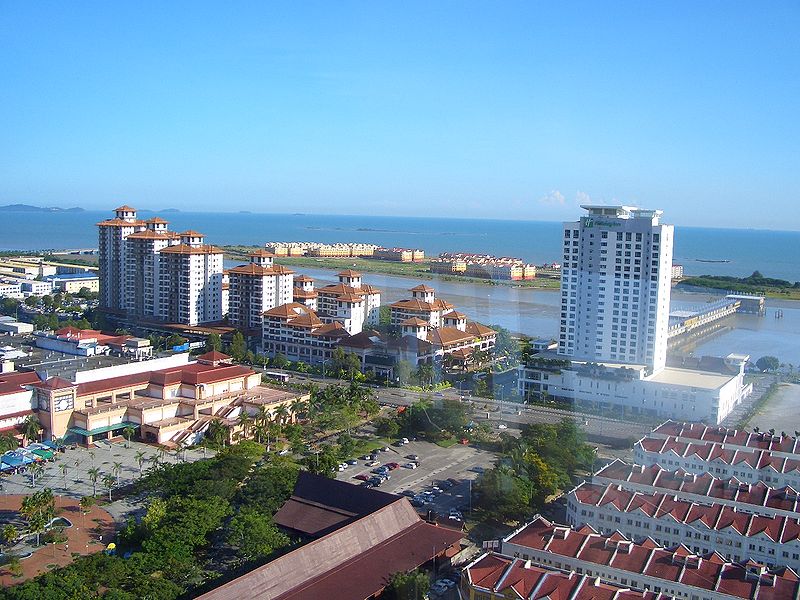
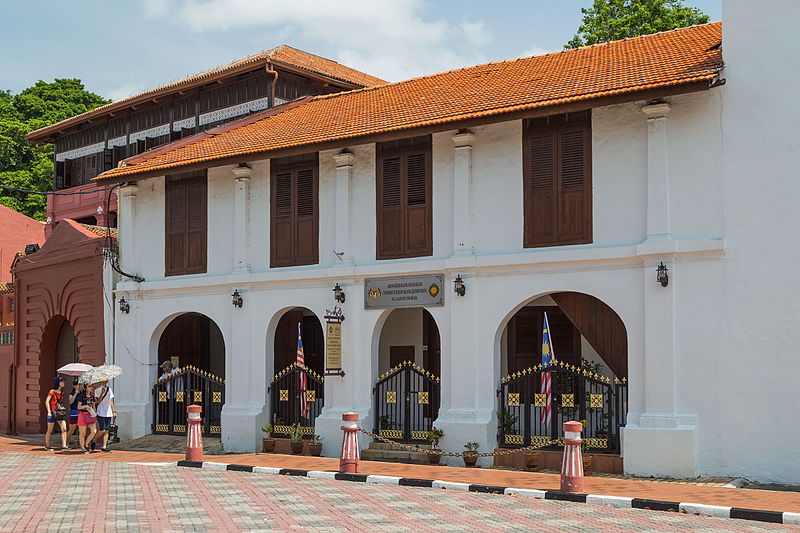
In Malacca during the early 15th century, Ming China actively sought to develop a commercial hub and a base of operation for treasure voyages into the Indian Ocean. Malacca had been a relatively insignificant region, not even qualifying as a polity prior to the voyages according to both Ma Huan and Fei Xin, and was a vassal region of Siam. In 1405, the Ming court dispatched Admiral Zheng He with a stone tablet enfeoffing the Western Mountain of Malacca as well as an imperial order elevating the status of the port to a country. The Chinese also established a government depot (官廠) as a fortified cantonment for their soldiers. Ma Huan reported that Siam did not dare to invade Malacca thereafter. The rulers of Malacca, such as Parameswara in 1411, would pay tribute to the Chinese emperor in person. Because of its strategic location, Malacca was an important stopping point for Zheng He’s fleet. To enhance relations, Hang Li Po, according to local folklore, a daughter of the Ming Emperor of China, arrived in Malacca, accompanied by 500 attendants, to marry Sultan Manshur Shah who reigned from 1456 until 1477. Her attendants married locals and settled mostly in Bukit Cina. Due to Chinese involvement, Malacca had grown as key alternative to other important and established ports. Due to the large influence of Arab, Persian, and Indian traders, Malacca soon turned into an Islamic sultanate, and Parameswara converted to Islam when he married a princess from Pasai, changing his name to Sultan Iskandar Shah. With the rise of Melaka as an empire, both the Majapahit and Siamese kingdoms were unable to conquer it, especially with the Chinese protection. During this time, a Hindu–Malay and Tamil–Malay society were also formed. The Sultan died in 1414 and was succeeded by his son, Megat Iskandar Shah. Malacca continued to prosper until the eighth Sultanate of Malacca, Mahmud Shah, with the various races who came to trade becoming associated with particular trade specialties; the Gujaratis, Tamils, and Bengalis were mostly cloth merchants, the Arabs and Persians waited for their vessels to be filled with goods from China, the Chinese dealt mainly in silk, camphor, and porcelain, and the natives of Malay Archipelago, like the Bugis and other island peoples, traded mainly in spices and sandalwood, and the Minangkabau in pepper and gold, with the Javanese controlling the rice and imported foodstuffs. Like other traders, the Chinese established their own area in the city, occupying the southeast side of the port around a hill called Bukit Cina, where they constructed temples and a well called Hang Li Poh’s Well, named after Hang Li Po, the fifth wife of the sixth Sultan of Malacca, Mansur Shah, who was a Chinese princess from the Ming Dynasty.
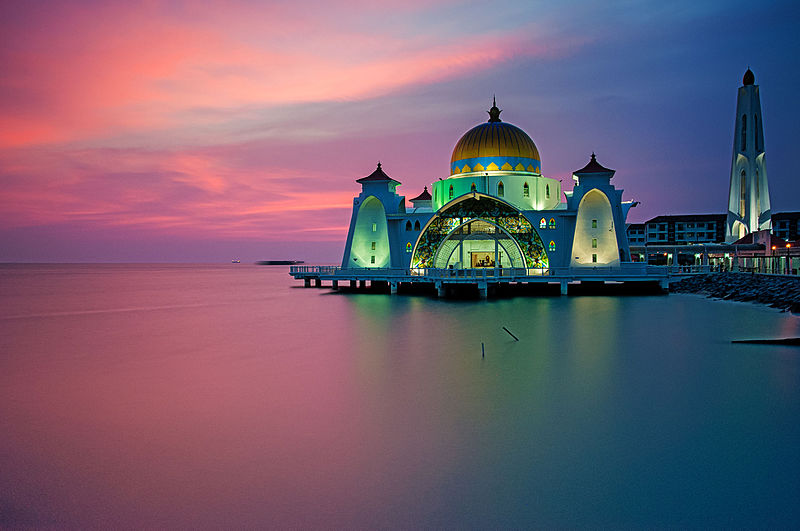
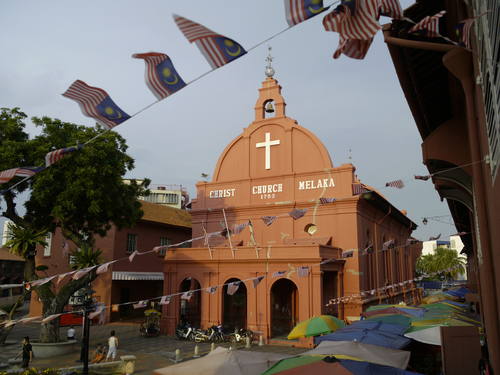
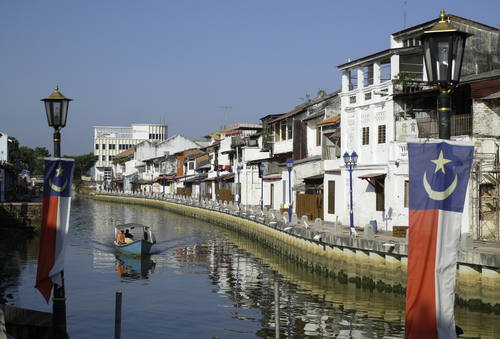
Due to its riches, the news of the success of Malacca reached the Portuguese, who had an established presence on Indian ports. The Portuguese, under King Manuel I, sent a representative named Diogo Lopes de Sequeira to establish contact with the Sultanate. At the first, Sequeira was well received by Sultan Mahmud Shah. But the Tamil Muslim community, who already had an established presence in Malacca, convinced the Sultan to eliminate the Portuguese based on their treatment of the Muslims of Goa. Reacting to the report, Sultan Mahmud then ordered several men from the Portuguese delegation to be captured and killed, but some of them managed to escape with their ships. Thus, in April 1511 Afonso de Albuquerque, who was the Portuguese expedition leader together with his armada, arrived in Malacca to sever its Islamic and Venetian trade. His intention was described in his own words when he arrived to Malacca:
If they were only to take “Malaca” out of the hands of the Moors, Cairo and Mecca would be entirely ruined, and Venice would then be able to obtain no spiceries except what her merchants might buy in Portugal.— Report on Albuquerque’s words on his arriving to Malacca
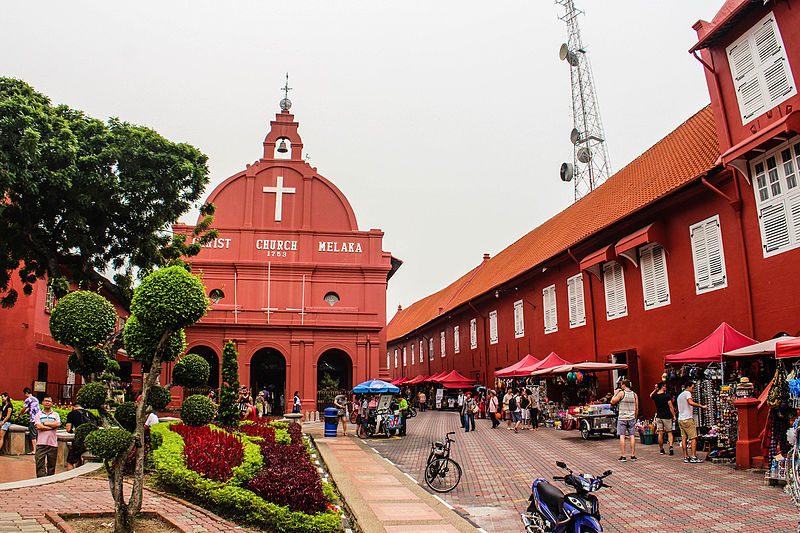
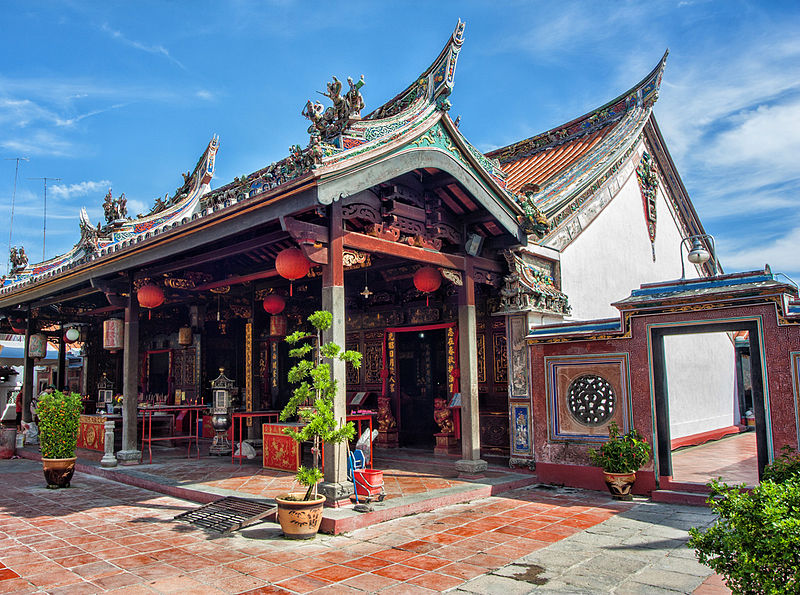
The Portuguese launch their first attack on 25 July 1511, but this was met with failure. Albuquerque then launched another attack on 15 August 1511, which proved successful as Malacca was captured on that day. The Portuguese constructed a fortress called A Famosa using rocks and stones taken from Muslim graves, mosques, and other buildings. Several churches and convents, a bishop’s palace, and administrative buildings such as the governor’s palace were built. The Portuguese imposed higher taxes on Chinese traders and restricted their ownership of land. The news of the city’s capture reached the Ming Dynasty of China; the Chinese were also displeased about the kidnapping of many Chinese children by the Portuguese in Tuen Mun. In retaliation for Portugal’s activity in Malacca, several Portuguese were later killed by the Chinese in the battles of Tunmen and Xicaowan in China. By the mid-16th century, the two sultanates of Aceh and Johor had arisen to take control of Malacca from the Portuguese which then became the centre of struggle between the three. By 1564, Aceh had retaken Aru (a territory which Sumatra had previously lost to Johor) and destroyed Johor’s capital, Johor Lama, with the Johor royal family taken to Aceh to rule Johor as a vassal state. Other attacks were carried out in 1570, 1613, and 1623, when Johor tried to break away from Aceh. Aceh’s ambition for domination later led to a clash with the Portuguese in Malacca. The two sultanates and the Portuguese became involved in a triangular war, but when both the Portuguese and the Johor saw Aceh as a threat due to its constant attacks against them, the two began to collaborate to fight Aceh. In 1582 the Portuguese assisted Johor to thwart an attack by Aceh, but arrangement ended when Johor attacked the Portuguese in 1587. Aceh continued its attacks against the Portuguese, and was later destroyed when a large additional armada from the Portuguese port in Goa came to defend Malacca and destroy the sultanate. After Aceh was left weakened, the Dutch East India Company (VOC) arrived, and Johor formed a treaty with them to flush out the Portuguese in the second capture of Malacca. The Dutch succeeded at overtaking Malacca while Johor managed to re-establish its suzerainty over many of its former dependencies in Sumatra, such as Siak (1662) and Indragiri (1669). The Dutch expanded the size of the city fort and built a significant amount of additional infrastructure. As they had less interest in the Malay Peninsula and Sumatra than they had in Java and the Maluku Islands, the Dutch remained neutral in local disputes until 1756 when the Bugis, who ruled the Riau-Lingga Sultanate, began to threaten Dutch maritime trade. The threats increase in the 18th century, when English rivalry started to establish its presence over areas in the northern Malay Peninsula. This led the Dutch to seize the Bugis areas of Riau and expel the Bugis from both Riau and Selangor, for fearing that these areas would otherwise have fallen under British rule. Malacca was placed under the direct control of Batavia in Java. From 1796 until 1801, and 1807 to 1818 Malacca was temporarily placed under a British Resident as the Netherlands were conquered by France in the Napoleonic Wars. It was returned to the Dutch in 1818. Malacca served as the staging area for the British victory in 1811. A treaty was later signed in 1824 between the British and Dutch to prevent further British influence in Java; one result was that the Johor-Riau Empire fell under two colonial powers along with Malacca, which was then officially handed to the British in 1825 and integrated as part of the Straits Settlements. The city came under direct control of a Resident in Penang, and the old fort in the city was then dismantled. The British established regulations for infrastructure with the construction of, for example, back alleys, chimneys, back yards, fire escapes, fire alleys, and pedestrian arcades.
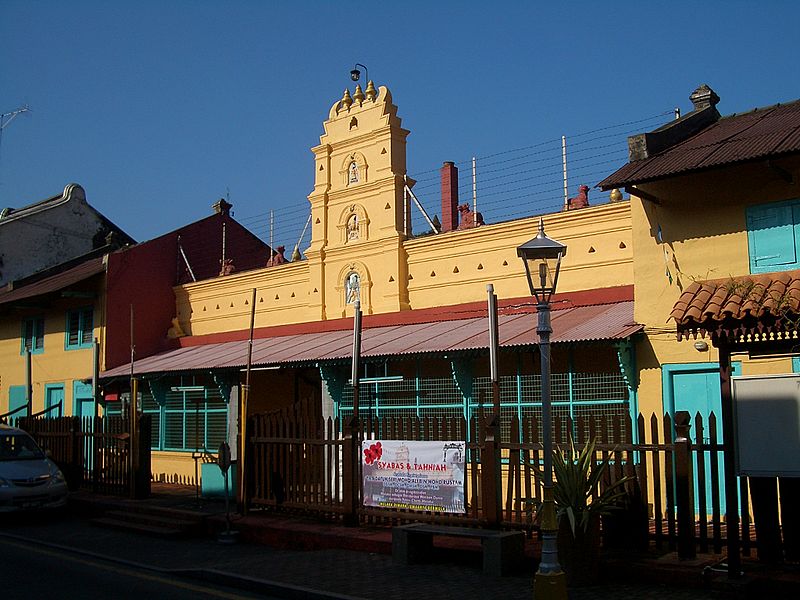
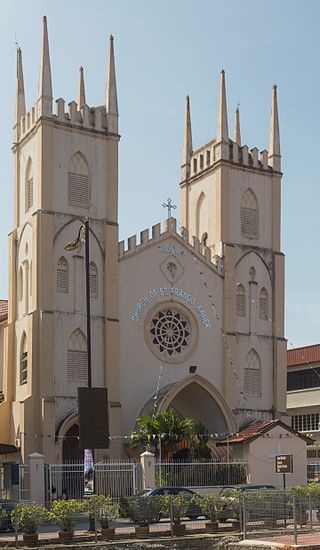
During the first stage of World War II, the city’s residents continued to live normally until the news of the Sinking of Prince of Wales and Repulse on 10 December 1941 reached the city and struck panic.British colonial officials began to flee and thousands of the city’s residents hid in rubber estates and jungles since they heard about the acts of cruelty committed in other parts of Malaya following their conquest by the Japanese. The Japanese Army arrived in the city on 14 January 1942 in a convoy of bicycles, but as they mainly focused on ensuring the retreat of the British to the south of the Malay Peninsula and Singapore, there was no major battle in the city or other parts of Malacca. During their occupation, a kempeitai headquarters was established in the formerly British “Government Rest House” which served as a place for arrests, torture and executions. Those who still lived in the city were given low rice rations with a tapioca supplement and a number of them were taken to Thailand and forced to construct the Burma–Siam Railway. When the Allies began to counter-attack against the Japanese, the Japanese officially surrendered to the Allies in August 1945 with the city left undamaged as there were no heavy battles, and it was administered as part of the British Military Administration until the formation of the Malayan Union and then the Federation of Malaya. After Malaya achieved its independence on 31 August 1957, a colonial building named “Malacca Club” was built by the British in the city as the social centre for Britons in British Malaya. The building was then turned into a memorial after 38 years to commemorate the Malayan independence day. After the Federation of Malaya, together with North Borneo, Sarawak and Singapore formed the Federation of Malaysia in 1963, Malacca was extensively developed and in 2003 it was granted city status. On 7 July 2008, Malacca City was listed as one of the historical cities in Malaysia, together with George Town in the northern Malay Peninsula. The city is located on both sides of the Malacca River near its mouth on the Straits of Malacca. The city is approximately 152 kilometres from Malaysia’s capital city, Kuala Lumpur. Due to large-scale land reclamation, it has grown in size, especially in the south. Its physical features are characterised by flat and gently undulating land stretching from its coast. The historic central area of the city is located near the old coastline; it includes St Paul’s Hill with the ruins of the Portuguese fortress, A Famosa and the Dutch Square on the right (eastern) bank of the river, and the old Chinatown on the left (western) bank. The Chinese Hill (Bukit Cina), where a large old Chinese cemetery is located, was formerly located to the northeast of the city, but is now surrounded by new buildings on all sides.
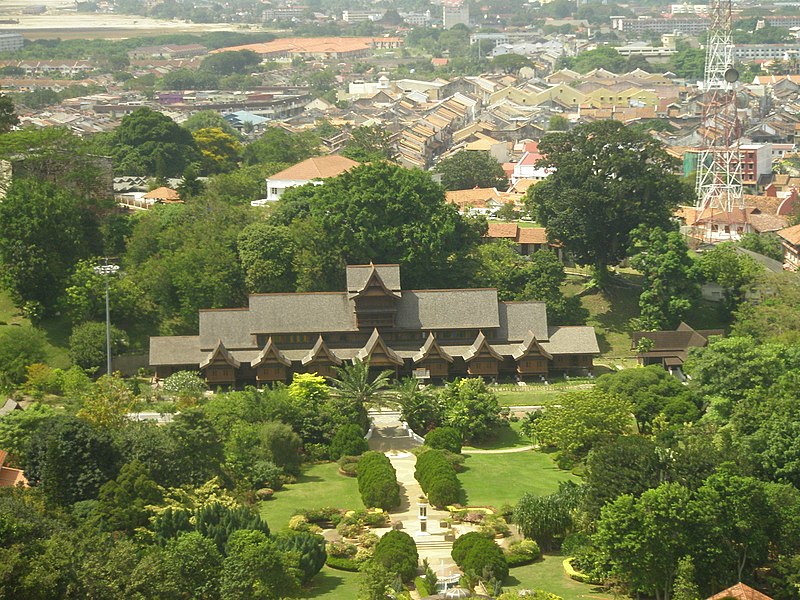

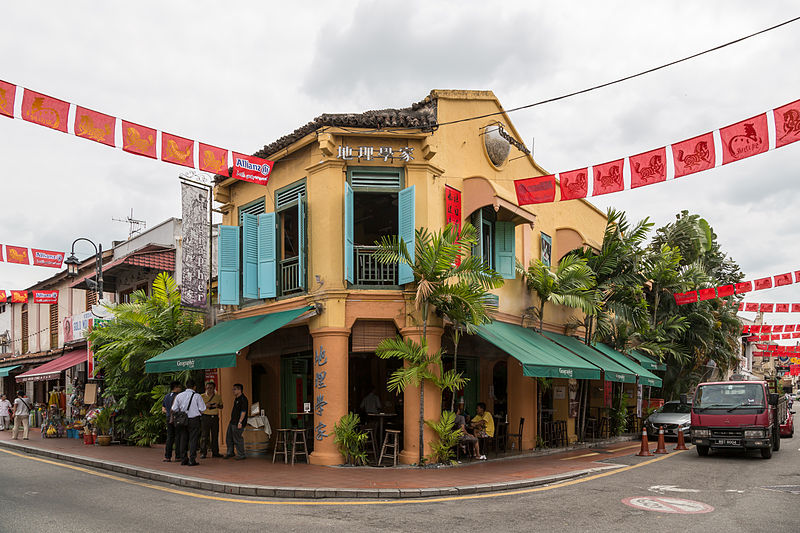
Let us skip the political, religious and economic data about the city. The Malacca Sultanate Palace was built to represent the Malay culture and Malaccan history during the sultanate era. The building was constructed without using any nails. The city also includes a variety of other cultural attractions such as Chinatown, Little India and Portuguese Settlement. The Chinatown feature a strong Chinese cultural influences, with Clan Houses and regional Chinese eateries located around the areas where many Chinese traders have settling since the era of Sultanate of Malacca. The most recognisable part of the Chinatown is the Jonker Walk where many outdoor stage performances occur. The Kopitiam and restaurants around the city serve mixed cultural influences of Malay and Baba Nyonya as well as various regional Chinese cuisines such as Teochew and European cuisines. The No 8 Heeren Street Heritage Centre is an old two-storey shop house which has been undergoing restoration for years. The Cheng Ho Cultural Museum is the site where Zheng He, a famous Muslim Chinese voyager, was believed to have set up a large warehouse complex along the northern side of the Malacca River, while the Straits Chinese Jewellery Museum is a site where there has been a collection of Chinese jewellery design and motifs since the establishment of relations between Malacca and the Ming dynasty of China. Little India is the site where Indian culture is presented with a variety of Indian shops and restaurants as well as fabric shops selling various saris, Punjabi suits and other Indian fabric designs. Located within the Portuguese settlement is a “Mini Lisbon” which has become the city’s centre of Portuguese culture, with many Eurasians descended from marriages between Portuguese men and local women that took place after the Portuguese conquest of Malacca residing there. The Dutch Square is an area surrounded by Dutch buildings such as the Stadthuys, Christ Church, British Queen Victoria’s Fountain, and Chinese settlers structure of Tan Beng Swee Clock Tower in honour of a generous late Chinese tycoon, Tan Beng Swee. The original clock tower was imported from England but has since been replaced with the one from Japan. The Portuguese traces are mostly on A Famosa which can also be seen across the square on the bank of Malacca River and on St. Peter’s Church. The Kuomintang Cenotaph (Malacca Warrior Monument) in Bukit Cina is a memorial where thousands of Chinese people in Malacca were killed by the Japanese during their occupation. Malacca Zoo is the main zoo in the city metropolitan, featuring 215 species of birds, mammals, reptiles and amphibians including the Sumatran rhinoceros, the Malayan gaur, Serow and the Indochinese tiger. An oceanarium located inside the Shore shopping malls complex features a variety of fish species and other sea creatures. Other attractions include the Maritime Museum, Taming Sari Tower and Macau Gallery Melaka. The Maritime Museum features a replica of a historical ship, the Flor de la Mar, and describes the trading history of Malacca, while the Taming Sari offers a scenic view of the city centre. The Padang Pahlawan is the site where Tunku Abdul Rahman, the father of Malayan independence, made his first independence announcement. St. Paul’s Hill is where the Governor’s Museum, Malacca Literature Museum and Malacca Light are located.
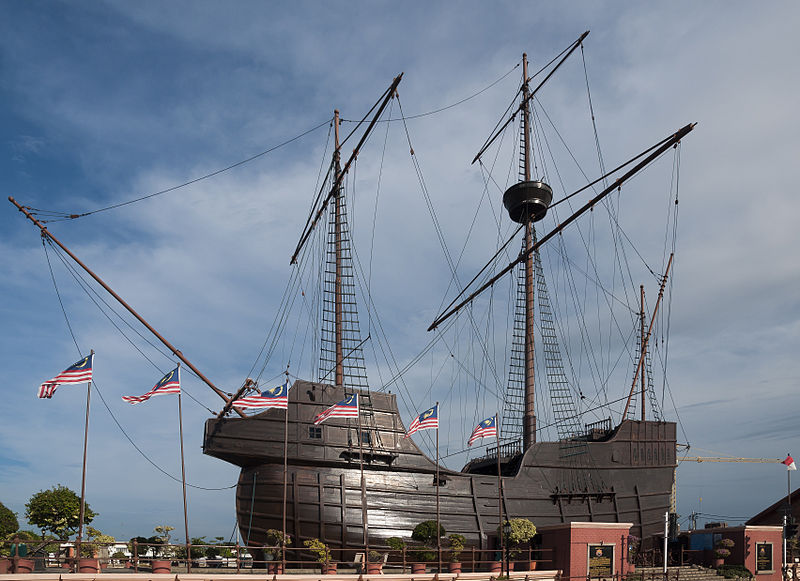
Internal roads linking different parts on the city are mostly federal roads constructed and maintained by the Malaysian Public Works Department. The city is accessible through the North–South Expressway and the coastal Syed Abdullah Aziz Road. There is also an old trunk road system, which once served as a main passageway to the city until the mid 1980s, when the North–South Expressway was built. In the old city centre, trishaw services are available through the Stadhuis Red Square. There was previously a proposal by the state government of Malacca to revive a bridge project named Malacca Strait Bridge that will connect land transportation in the city with the Indonesian city of Dumai on Sumatra island. Melaka Sentral is the main bus and taxi terminal for the city, with services in and around the city as well as domestic services. Most taxis in the city are executive taxis with either four, six or fourteen seats; but only two types of taxis, the limousine (4 seats) and bas persiaran (14 seats), provide services to Singapore with the rest providing services only to other parts of Peninsular Malaysia. There were railway tracks from Pulau Sebang to Malacca City before World War II, but these were dismantled by the Japanese for the construction of the Burmese Death Railway. On 10 October 2015, Keretapi Tanah Melayu Berhad (KTMB) commuter service has introduced a new route, shuttle service between Seremban-Sebang/Tampin-Gemas station. A 1.6-km line of Malacca Monorail was launched in October 2010, served the route along the Malacca River. Due to several technical glitches months into its operation, the system was left idle in 2013. However, in June 2015 the Malacca State Government decided to revive the project. On 4 December 2017, Malacca Monorail has re-operate with enhanced safety features such as lightning-prevention devices and the addition of a rescue vehicle to attract wagons in the event of a technical problem. The previous incident is believed will not recur as tests had been performed for two months before re-operation. The Malacca Monorail operating hours are 10.00 am to 10.00 pm on weekdays and will be continued until 12.00 midnight on Saturdays and Sundays. The main airport; Malacca International Airport (MIA) (ICAO: WMKM) is located in Batu Berendam but serves the city as well as northern Johor. Malindo Air and XpressAir is serves Malacca. Malindo Air operates daily flights to Pekanbaru in Indonesia and Penang in Malaysia. XpressAir operates four times flight to Pekanbaru. China Southern Airlines also operates scheduled charter flights from Malacca to Guangzhou vice versa, to transport tourist from both locations. The main water transportation in the city is the Malacca River Cruise with evening cruises along the Malacca River. The cruise route is an area marking the border between historic Chinatown and Malay area. The Melaka Gateway is a project under construction involving the development of one natural and two man-made islands off the coast of Malacca which will feature an international cruise terminal and aid water transport in the city. An international shipping port is also planned to be built as part of China’s Maritime Silk Route economic belt.

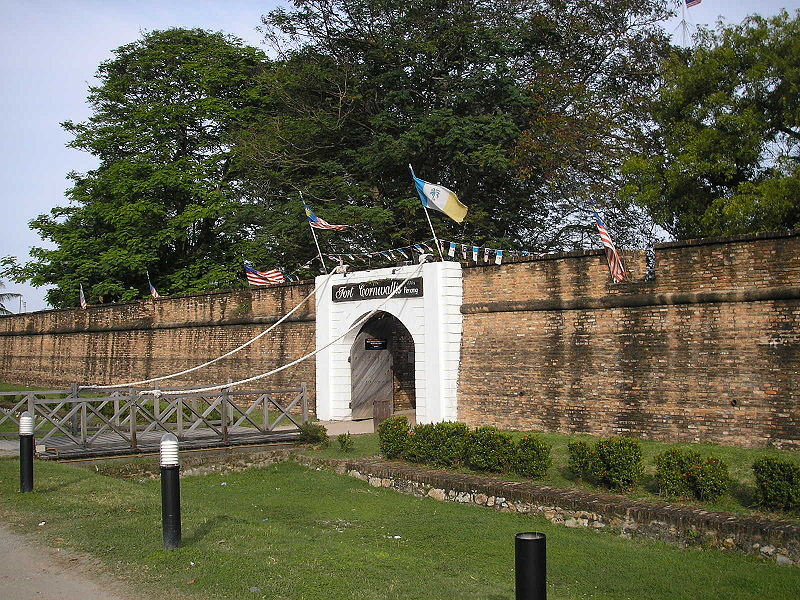
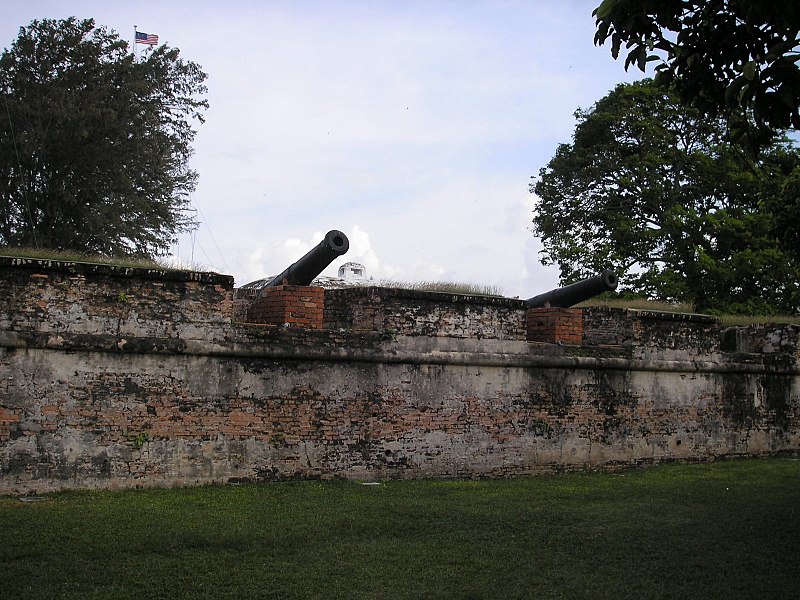
George Town, officially the City of Penang Island (Malay: Bandaraya Pulau Pinang), is the capital city of the Malaysian state of Penang. The city comprises Penang Island and its surrounding smaller islands. George Town is Malaysia’s third most populous city with 708,127 inhabitants as of 2010, while Greater Penang is the nation’s second largest conurbation with a population of 2,412,616. Established as an entrepôt by Francis Light of the British East India Company in 1786, George Town was the first British settlement in Southeast Asia. Together with Singapore and Malacca, George Town formed part of the Straits Settlements, which became a British crown colony in 1867. It was subjugated by Japan during World War II, before being recaptured by the British at war’s end. Shortly before Malaya attained independence from the British in 1957, George Town was declared a city by Queen Elizabeth II, making it the first city in the country’s modern history. Due to the intermingling of the various ethnicities and religions that arrived on its shores, George Town acquired a large eclectic assortment of colonial and Asian architectural styles. It also gained a reputation as Malaysia’s gastronomic capital for its distinct and ubiquitous street food. Moreover, the city hosts unique cultural heritage, such as the Peranakans whose legacies are still visible on Penang’s architecture and cuisine. The city of George Town includes the Bayan Lepas Free Industrial Zone, a high-tech manufacturing hub regarded as the Silicon Valley of the East. The city also serves as the financial centre of northern Malaysia and the nation’s most vital medical tourism hub. Logistically, the Penang International Airport links George Town with several major regional cities, while a ferry service, the Penang Bridge and the Second Penang Bridge connect the city with the rest of Peninsular Malaysia. Meanwhile, George Town’s Swettenham Pier has emerged as the busiest port-of-call in Malaysia for cruise ships. In the 1770s, the British East India Company instructed Francis Light, a British Royal Navy captain, to form trade relations in the Malay Peninsula. Light subsequently landed in Kedah, a Siamese vassal state threatened by both Siam and Burma, as well as an internal Bugis revolt. Aware of this situation, Light formed friendly relations with the then Sultan of Kedah, Sultan Muhammad Jiwa Zainal Adilin II, and promised British military protection, while the Sultan reciprocally offered Penang Island, then part of Kedah. Although Light subsequently reported on this offer to his superiors, it was only in 1786 when he was finally ordered to obtain Penang Island from Kedah. The British East India Company sought control of the island as a Royal Navy base, and as a trading post between China and India. To that end, Light negotiated with the new Sultan of Kedah, Sultan Abdullah Mukarram Shah, regarding the cession of the island to the British East India Company in exchange for British military aid. After an agreement was signed between Light and the Sultan, Light and his entourage sailed on to Penang Island, where they arrived on 17 July 1786. The area where Light first landed, which is now the Esplanade, was originally a swamp covered in thick jungle. Once the area was cleared, a simple ceremony was held on 11 August, during which the Union Jack was raised. Penang Island was renamed the Prince of Wales Island after the heir to the British throne, while the new settlement of George Town was created in honour of King George III. Light developed George Town as a free port, thus allowing merchants to trade without having to pay any form of tax or duties. The policy’s intent was to entice traders from the Dutch ports in the region. The number of incoming vessels rose from 85 in 1786 to 3,569 in 1802; George Town’s population had also increased to 10,000 by 1792. A committee of assessors was established in 1800, making it the first local council to be established in British Malaya. Meanwhile, a Supreme Court was established at Fort Cornwallis in 1808. In the early 19th century, Penang Island became a centre of spice production within Southeast Asia. Spices such as nutmeg, clove and pepper, produced from the spice farms throughout the island, were exported via the Port of Penang in George Town. The spice trade also allowed the British East India Company to cover the administrative costs of Penang. In 1826, George Town was made the capital of the Straits Settlements, an administrative polity that was also composed of Singapore and Malacca. However, the capital was then shifted to Singapore in 1832, as the latter had usurped George Town’s position as the region’s preeminent harbour. Nonetheless, George Town retained its importance as a vital British entrepôt. Due to the opening of the Suez Canal, the advent of steam ships and a tin mining boom in the Malay Peninsula, the Port of Penang became a major tin-exporting harbour. By the end of the 19th century, as mercantile firms and banks, including Standard Chartered and HSBC, flocked into George Town, the city also evolved into a leading financial centre in Malaya. Throughout the century, George Town’s population grew rapidly in tandem with the city’s economic prosperity. A cosmopolitan, multi-cultural population emerged, comprising Chinese, Malay, Indian, Peranakan, Eurasian, Thai and other ethnicities. However, the population growth also created social problems, such as inadequate sanitation and public health facilities, as well as rampant crime.The latter culminated in the Penang Riots of 1867, during which rival Chinese triads clashed in the streets of George Town. Also in the same year, the Straits Settlements was made a British crown colony, to be governed directly by the Colonial Office in London. For George Town, direct British rule meant better law enforcement, as the police force was vastly improved and the secret societies that had previously plagued the city were gradually outlawed. More investments were also made on the city’s health care and public transportation. With improved access to education, a greater level of participation in municipal affairs by its Asian residents and substantial press freedom, George Town was perceived as being more intellectually receptive than Singapore. The city became a magnet for well known English authors, Asian intellectuals and revolutionaries, including Rudyard Kipling, Somerset Maugham and Sun Yat-sen.
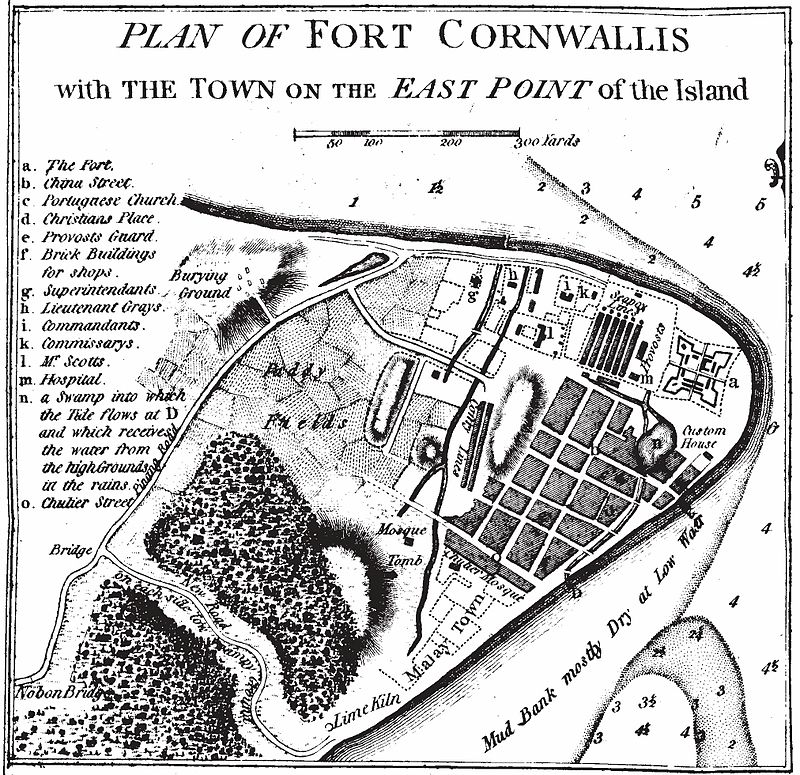
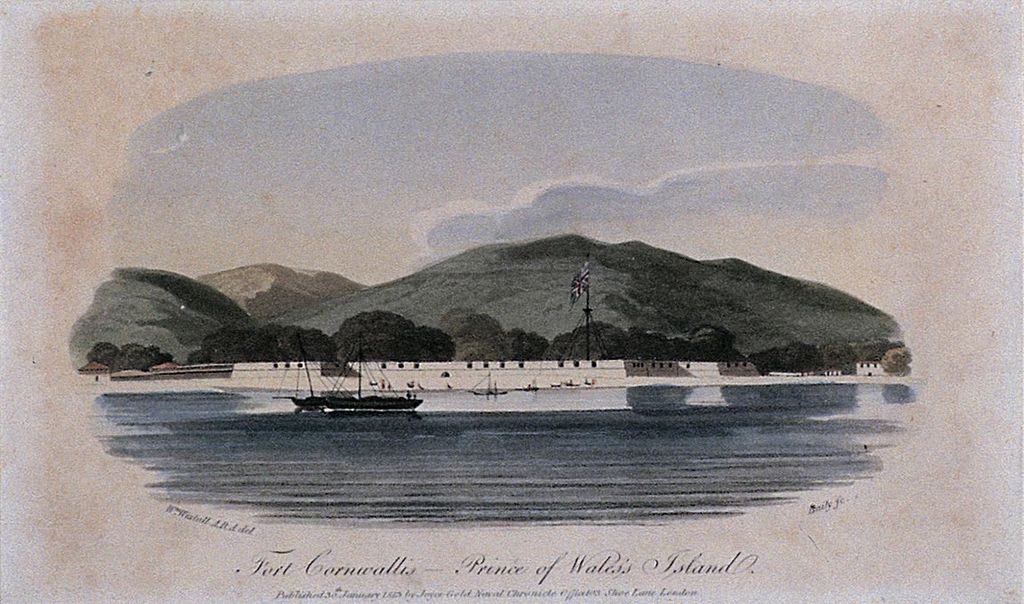
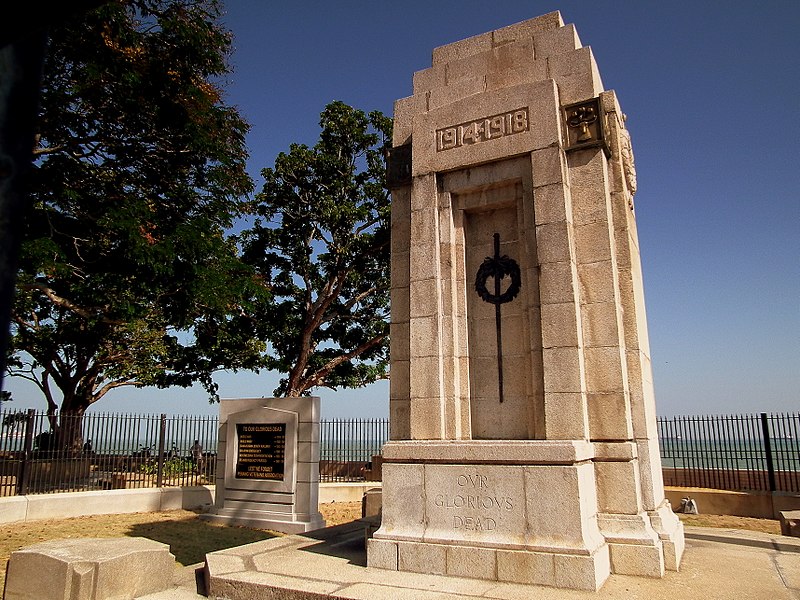
At the start of World War I in 1914, the Battle of Penang occurred, during which SMS Emden, an Imperial German Navy cruiser, sank two Allied warships off the coast of George Town. 147 French and Russian sailors were killed. World War II, on the other hand, brought unparalleled social and political upheaval to Penang. In early December 1941, Japanese warplanes indiscriminately strafed and bombed George Town, and wiped out the defending Allied air squadrons. While the British Army had earlier designated Penang Island as a fortress, Lieutenant-General Arthur Percival then ordered a withdrawal from Penang. Not only did the British abandon the Batu Maung Fort south of the city, they also covertly evacuated Penang’s European population, leaving the rest of the populace to their fates. Historians have since argued that the withdrawal and the silent evacuation of the white race led to the loss of the British sense of invincibility, and that the moral collapse of British rule in Southeast Asia came not in Singapore, but in Penang. George Town fell to the Imperial Japanese Army on 19 December 1941, marking the start of a brutal period of Japanese occupation. Penang Island was renamed Tojo-to, after the then Japanese Prime Minister Hideki Tojo. This period was known for the Imperial Japanese Army’s massacres of Penang’s Chinese populace, known as Sook Ching to the locals. Women in George Town were also coerced to work as comfort women by the Japanese. George Town’s harbour facilities were also put to use as a major U-boat base by Nazi Germany. Between 1942 and 1944, the Port of Penang was utilised by submarines of the Imperial Japanese Navy, the Kriegsmarine and the Regia Marina. Between 1944 and 1945, Allied bombers based in India repeatedly bombed George Town, seeking to destroy the naval facilities and administrative centres. Several colonial buildings were destroyed or damaged, including the Government Offices, St. Xavier’s Institution, Hutchings School (now Penang State Museum) and the Penang Secretariat Building. The Penang Strait was also mined to impede Japanese shipping. Following the Japanese surrender on 15 August 1945, the Penang Shimbun, a Japanese newspaper, published the proclamation of surrender issued by the Emperor of Japan. Under Operation Jurist, the British Royal Marines accepted the surrender of the Japanese garrison in Penang and retook Penang Island on 3 September 1945.
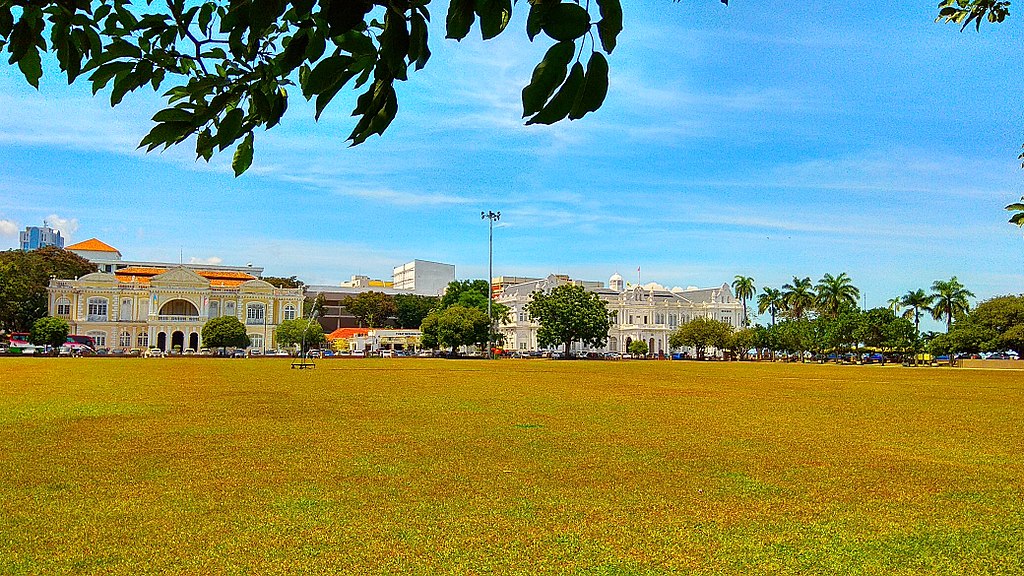

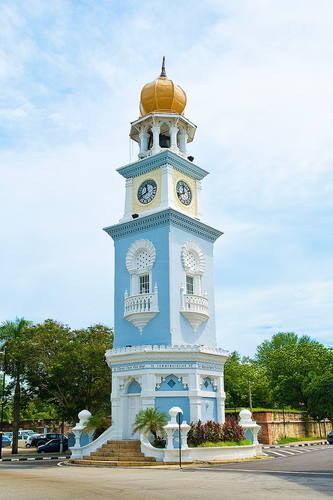
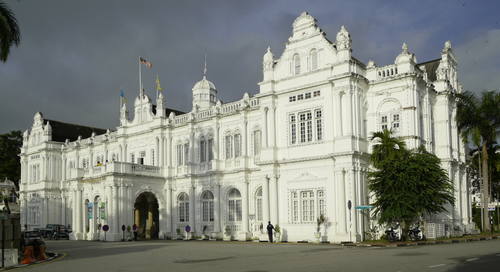
After a period of military administration, the British dissolved the Straits Settlements in 1946 and proceeded to merge the Crown Colony of Penang into the Malayan Union, which was then replaced with the Federation of Malaya in 1948. However, the absorption of the British colony of Penang into Malaya alarmed Penang’s population over economic and ethnic concerns. Between 1948 and 1951, the Penang Secessionist Committee was formed to avert Penang’s merger with Malaya, but ultimately petered out due to British disapproval. The British government responded to the concerns raised by the secessionists by guaranteeing George Town’s free port status, as well as reintroducing municipal elections in George Town in 1951. By 1956, George Town had become the first municipality in the Malayan Federation to have a fully elected local council. On 1 January 1957, George Town was accorded city status by Queen Elizabeth II, becoming the first city within the Federation of Malaya, and by extension, Malaysia. In the following years, George Town retained its free port status, as guaranteed by the British colonial authorities before granting independence to Malaya. This was not to last, however – in 1969, the Malaysian federal government revoked George Town’s free port status, sparking massive unemployment in the city. This also marked the start of George Town’s decline, which lasted up to the early 2000s. As the Malaysian federal government continued to develop Kuala Lumpur and nearby Port Klang, Penang began to suffer considerable brain drain. In a bid to revitalise George Town, the Komtar project was launched in 1974. Hundreds of shophouses, schools and temples, as well as whole streets, were demolished in order to make way for the construction of Penang’s tallest skyscraper. However, instead of arresting George Town’s decline, Komtar itself became a white elephant by the 2000s. In 1974, the George Town City Council was merged with the Penang Island Rural District Council to form the Penang Island Municipal Council, sparking a decades-long debate over George Town’s city status. The city’s decline continued into the early 2000s. In 2001, the Rent Control Act, which had protected the low-income residents and smaller businesses within the city centre from arbitrary rental hikes, was repealed. Consequently, residents moved out of the city’s historical core, leaving its colonial-era buildings in disrepair. Meanwhile, an incoherent urban planning policy and poor traffic management led to worsening traffic congestion, while decades of brain drain also took its toll as the city lacked the expertise to regulate urban development. In response, George Town’s non-governmental organisations and the national press galvanised public support and formed strategic partnerships for the conservation of the historic buildings, and to restore the city to its former glory. As a result of the widespread resentment over George Town’s decline, the then federal opposition coalition, Pakatan Rakyat (now Pakatan Harapan), was voted into power within Penang in the 2008 State Election. Subsequent efforts to clean up the city, and measures to improve traffic flow, cultural and environmental aspects by the new state government led to George Town being ranked Asia’s 8th most liveable city by ECA International in 2010. The city’s services sector has since been boosted by the private sector and an influx of foreign investors. The Indian Ocean tsunami which struck in 2004 hit the western and northern coasts of Penang Island, including George Town, claiming 52 lives (out of 68 in Malaysia). Whilst George Town had been declared a city by Queen Elizabeth II in 1957, the jurisdiction of the city was expanded by the Malaysian federal government to encompass the entirety of Penang Island in 2015.

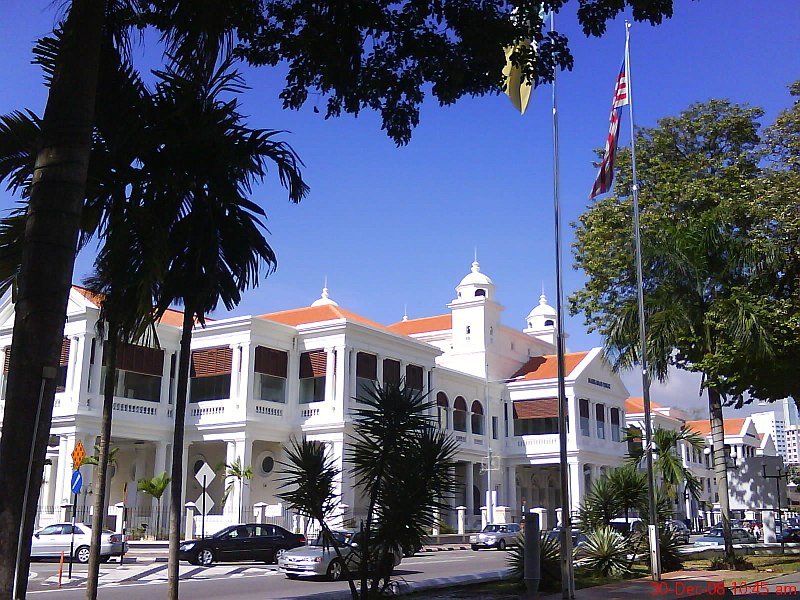

The jurisdiction of George Town covers an area of 305.77 km2 (118.06 sq mi), encompassing the entirety of Penang Island and five of the surrounding islets, including Jerejak Island. George Town is only slightly more than 1⁄3 the size of Singapore with a population density of 2,372/km2 (6,140/sq mi); thus the city has one of the highest population densities of all Malaysian cities. The contiguous hotel and resort belts of Batu Ferringhi and Tanjung Bungah and Tanjung Tokong along the northern beaches of Penang Island form the northwestern fringes of George Town. The central hills of Penang Island, including Penang Hill, serve as a giant green lung for George Town and an important forested catchment area. While the central hills have somewhat limited the westward urban sprawl, George Town’s expansion is more evident southward along the eastern seaboard of Penang Island, creating the suburbs of Jelutong and Gelugor, the latter merging with the northward development of Bayan Lepas. As with most island cities, land scarcity is a pressing issue in George Town. Land reclamation projects have been carried out to provide more low-lying land at high-demand areas, such as at Gurney Drive, Tanjung Tokong and Jelutong. Recognised as having a “unique architectural and cultural townscape without parallel anywhere in East and Southeast Asia”, George Town contains one of the largest collections of pre-war buildings in Southeast Asia. The World Heritage Site covers nearly 260 ha (2.6 km2) of the city centre, roughly bounded by Transfer Road to the west and Prangin Road to the south. The zone includes the city’s administrative precinct, which is home to the most historic landmarks like Fort Cornwallis, City Hall and the Penang State Museum, as well as the main Central Business District along Beach Street. The zone also covers various places of worship, such as St. George’s Church, the Kapitan Keling Mosque and the Goddess of Mercy Temple, as well as the Cheong Fatt Tze Mansion and the Eastern & Oriental Hotel. Among the restrictions in force within the zone is a ban on the construction of any structure exceeding 18 m (59 ft) in height, and that any new building which is located adjacent to a historically important structure must not exceed the height of the latter. Unlike other cities in Malaysia, George Town still retains most of its English street names. Even for roads that have been renamed in Malay, such as Jalan Masjid Negeri, Penangites in general still prefer to use the road’s former colonial name, which in this particular case is Green Lane.[citation needed] This is partly because the new names are often unwieldy (e.g. Pitt Street vs Jalan Masjid Kapitan Keling, Northam Road vs Jalan Sultan Ahmad Shah), but also reflects a strong conservatism in the local population, who see Penang’s colonial history as part of their local identity. Since 2008, multi-lingual road signs have been in use throughout Penang Island. Each of the new road signs shows the street’s official Malay name and either the street’s English, Chinese, Tamil or Arabic name. The expansion of George Town has created suburbs to its northwest, west and south. The northwestern suburbs are somewhat more affluent, given their seafront locations which attract tourists and expatriates. The southern suburbs, such as Jelutong, grew due to industrial activities. On the other hand, Air Itam and Paya Terubong emerged to the west of George Town as a result of agricultural plantations on the central hills of Penang Island. Since the 1970s, massive industrialisation around Bayan Lepas, which created the Bayan Lepas Free Industrial Zone, led to the rapid urbanisation of the southeastern corner of Penang Island as well. The western half of the island, where Balik Pulau forms the main population centre, remains sparsely-populated, although urbanisation has encroached into the area in recent years. The most popular beaches of George Town are situated along the city’s northwestern suburbs, specifically Batu Ferringhi, Tanjung Bungah and Tanjung Tokong. Several hotels and resorts have been established along these locations, including Hard Rock Hotel. Aside from these, George Town is home to popular promenades such as Gurney Drive, the Esplanade and Karpal Singh Drive. In particular, Gurney Drive forms part of the city’s second Central Business District, and is a shopping haven with two upmarket shopping malls – Gurney Plaza and Gurney Paragon. Land reclamation is currently ongoing off Gurney Drive in a state-led effort to create a seafront public park, named Gurney Wharf. The central hills of Penang Island, situated to the west of George Town, serve as a gigantic green lung and water catchment area for the urbanised island. Rising 833 m (2,733 ft) above sea level, the peak of Penang Hill is accessible via the Penang Hill Railway from its base station off Hill Railway Road. Once a retreat used by British officials and Queen Elizabeth II, Penang Hill is one of Penang’s most well-known tourist attractions. Founded in 1884 as an offshoot of the Singapore Botanic Gardens, the Penang Botanic Gardens is Malaysia’s oldest botanical garden. Today, it serves as a major recreational area, receiving about 5,000 visitors every weekend. This botanical garden also encompasses Penang’s biggest waterfall, which forms part of George Town’s water supply. Meanwhile, the nearby 172-acre (70 ha) City Park was officially opened in 1972. The city is also home to the world’s smallest national park – the Penang National Park. Covering 2,562 ha (25.62 km2) of the northwestern tip of Penang Island, it contains mangrove swamps, rainforest interspersed with hiking trails and tranquil beaches. Other notable natural attractions nearby include the Tropical Spice Garden and the Entopia Butterfly Farm, the latter of which was Malaysia’s first butterfly sanctuary.
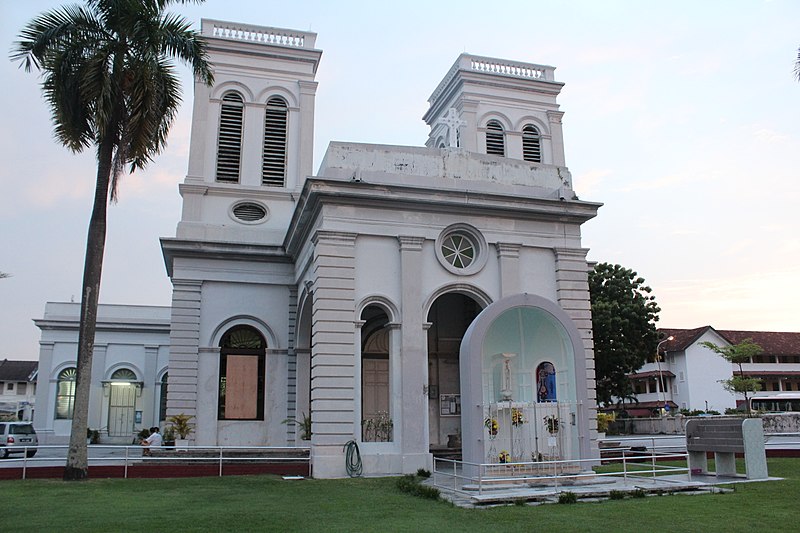
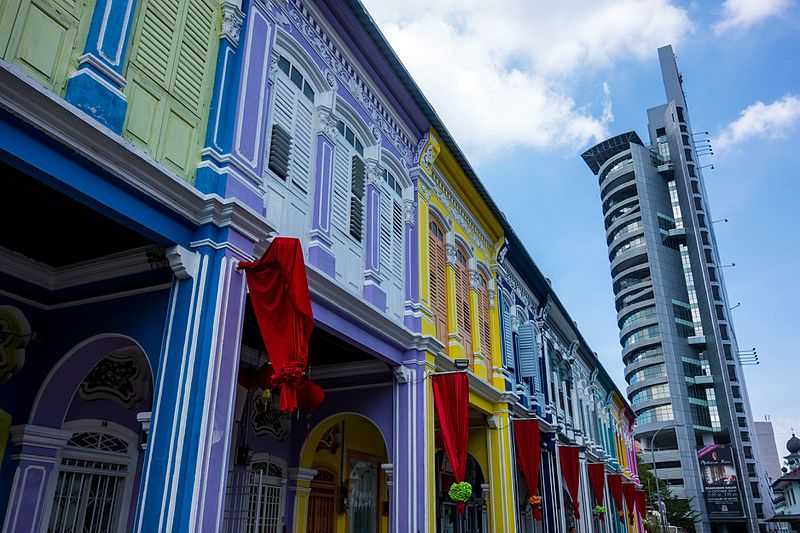
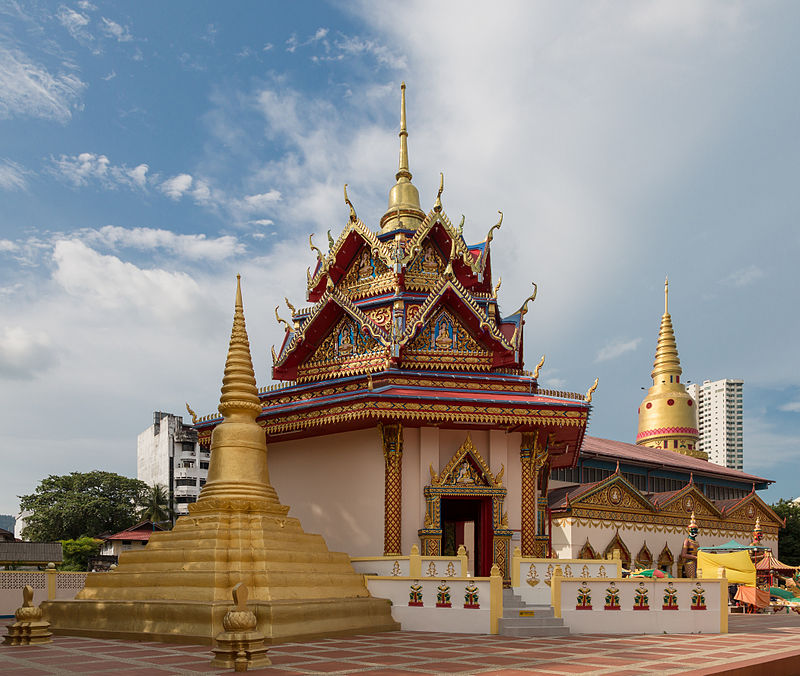
Most of George Town’s famous heritage landmarks, including Fort Cornwallis, the City Hall, the High Court, St. George’s Church and the Eastern & Oriental Hotel are located within the UNESCO World Heritage Site. The city’s main Central Business District at Beach Street, also within the UNESCO zone, is home to banks built in various Art Deco-based hybrid styles. Colonial-era bungalows, such as The Residency and Suffolk House, can be found throughout the city as well. Aside from colonial European architecture, a huge assortment of Asian architectural styles also exist throughout the city. Buildings like the Kapitan Keling Mosque, Cheong Fatt Tze Mansion and the Pinang Peranakan Mansion are notable for their architectural styles, which combine diverse cultural influences. Peranakan townhouses, exemplified by the Sun Yat-sen Museum, dominate the cityscape as well.Meanwhile, Indian architecture is more prominent within the city’s Little India, which also contains the Sri Mahamariamman Temple. In the suburbs, the Siamese and Burmese communities have left their mark too; the Buddhist temples at Pulau Tikus include Wat Chaiyamangkalaram and the Dhammikarama Temple. Another example of a hybrid Asian architecture is the Kek Lok Si Temple at Air Itam, which merges Chinese, Siamese and Burmese influences. Since the mid 20th century, modern urbanisation has transformed much of George Town. Just south of the UNESCO World Heritage Site stands the Komtar Tower, the tallest skyscraper in Penang at nearly 250 m (820 ft) tall. The second Central Business District at Northam Road and Gurney Drive, which lies along the city’s northern shoreline, is also home to some of Penang’s tallest skyscrapers, including Setia V, Gurney Paragon and BHL Tower. With increasing urbanisation, high-rises are also springing up within the suburbs of George Town. The Penang State Museum and Art Gallery houses relics, photographs, maps, and other artifacts that document the history and culture of Penang. Other museums within the city focus on religious and cultural aspects, as well as famous personalities, including the Penang Islamic Museum, Sun Yat-sen Museum, P. Ramlee’s House, Batik Painting Museum, and Universiti Sains Malaysia Museum and Gallery. In recent years, private-run museums have sprung up all over the city, such as the Camera Museum and the Penang Toy Museum. A handful of newer visual museums have also been launched, such as the Made-in-Penang Interactive Museum and the Penang Time Tunnel. George Town’s cultural melting pot of various races and religions means that there are a great many celebrations and festivities in any given year. The major cultural and religious festivities in George Town include, but not limited to, the Chinese New Year, Chap Goh Meh, Songkran, Wesak Day, Seventh Month Festival, Nine Emperor Gods Festival, Eid ul-Fitri, Deepavali, Thaipusam, Vaisakhi and Christmas. The city’s expatriates have introduced a host of other celebrations as well. Bon Odori is celebrated yearly at the Esplanade by the Japanese, while St. Patrick’s Day and Oktoberfest, traditionally celebrated by the Irish and the Germans respectively, have also been gaining popularity amongst the locals. In addition, the city hosts several major festivals in any given year. The George Town Festival, first held in 2010, has evolved into one of the top arts events in Southeast Asia, while the Penang Hot Air Balloon Fiesta attracts close to 200,000 visitors from all over the world.
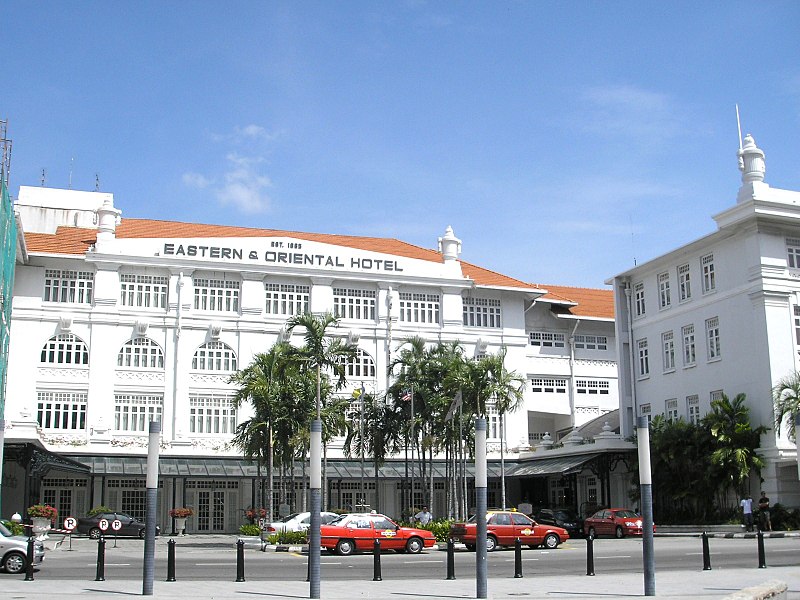

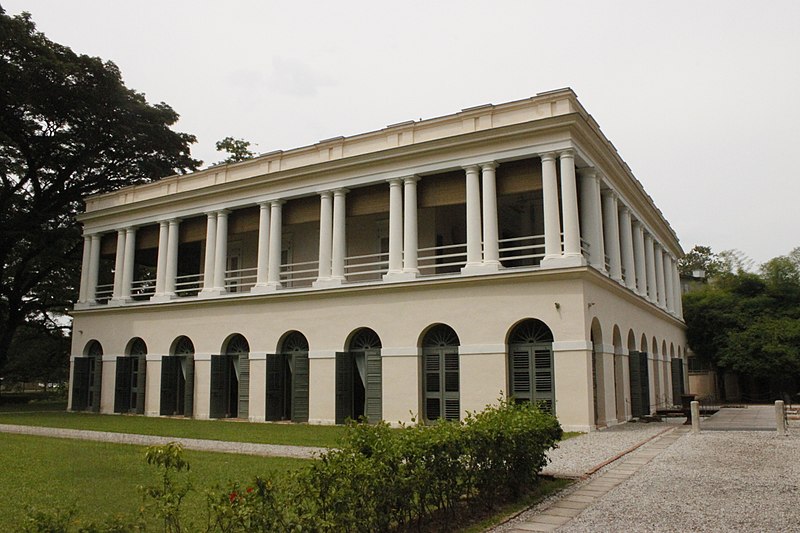
Development of George Town’s streets and roads is an ongoing process that dates back to the early years of British rule. The city’s oldest streets, including Light Street, Beach Street, Chulia Street and Pitt Street, were arranged in a grid pattern. The Tun Dr Lim Chong Eu Expressway runs along the eastern coastline of Penang Island between the city centre and the Penang International Airport, linking both locations with the Bayan Lepas Free Industrial Zone and the Penang Bridge. The George Town Inner Ring Road and the Penang Middle Ring Road are the two major ring roads around the city centre. The city centre is also linked with the western parts of Penang Island, such as Balik Pulau, via the pan-island Federal Route 6. Both the 13.5 km (8.4 mi)-long Penang Bridge and the 24 km (15 mi)-long Second Penang Bridge link George Town with the rest of Peninsular Malaysia. The former bridge was completed in 1985, while the latter, opened in 2014, is currently the longest bridge in Southeast Asia. George Town was once a pioneer of public transportation in British Malaya. The city’s first tram system, then powered by steam, commenced operations in the 1880s. While the tram lines have since been disused, another colonial legacy, the trishaw, remains in use throughout the city, albeit catering primarily for tourists. Today, buses form the backbone of public transportation within George Town. Rapid Penang, with over 30 routes on Penang Island, is the sole public bus service provider within George Town. In addition, open-topped double deckers, known as Hop-On Hop-Off buses, have been introduced for tourists in the city. Meanwhile, the Penang Hill Railway is a funicular railway to the peak of Penang Hill. Efforts are also being undertaken to promote pedestrianisation and the use of bicycles as a greener transportation mode. Dedicated cycling lanes have been marked throughout the city and in 2016, George Town became the first Malaysian city to operate a public bicycle-sharing service, with the launch of LinkBike. The Penang International Airport, 16 km (9.9 mi) south of the city centre, was opened in 1935. It serves as the main airport for northern Malaysia, with frequent links to major Asian cities such as Kuala Lumpur, Singapore, Bangkok, Jakarta, Ho Chi Minh City, Taipei, Hong Kong, Guangzhou and Doha. It is also a hub for two Malaysian low-cost carriers – AirAsia and Firefly. The airport is Malaysia’s second busiest in terms of cargo traffic and recorded the third highest passenger traffic of all Malaysian airports as of 2013. The Port of Penang consists of seven facilities along the Penang Strait, including Swettenham Pier in George Town. Renovated in 2009 as a cruise shipping terminal, Swettenham Pier is one of the major tourist entry points into George Town. As of 2017, the pier recorded 1.35 million tourist arrivals, thereby surpassing Port Klang as the busiest port-of-call in Malaysia for cruise shipping. The pier has also attracted some of the world’s largest cruise liners, such as the RMS Queen Mary 2. A number of cruise ships call Swettenham Pier as their homeport, bringing tourists into and out of George Town towards regional destinations like Phuket and Singapore. Occasionally, the pier hosts warships as well, including those from Singapore, Thailand and the United States. Rapid Ferry is a cross-strait shuttle ferry service that connects George Town with the town of Butterworth on the Malay Peninsula. It is the oldest ferry service in Malaysia, dating back to 1894 when the first passenger ferry commenced operations. Currently, six ferries ply the Penang Strait between George Town and Butterworth daily.
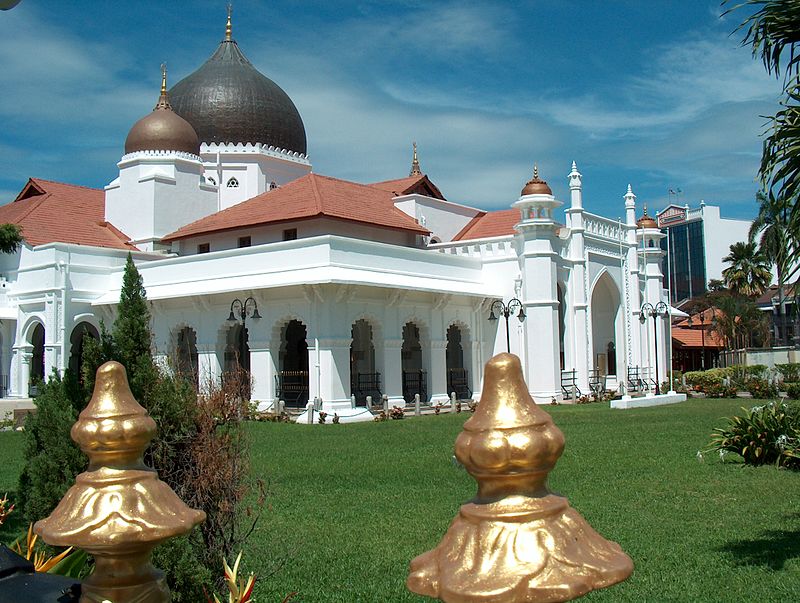
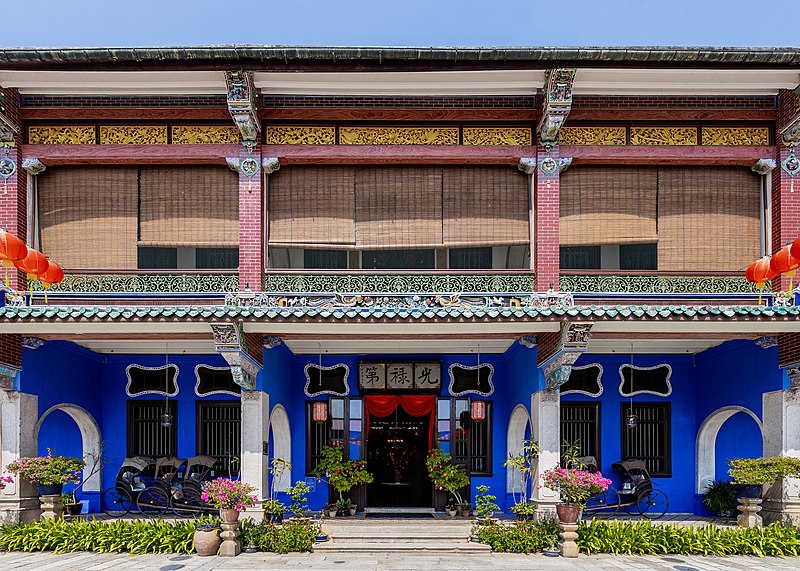

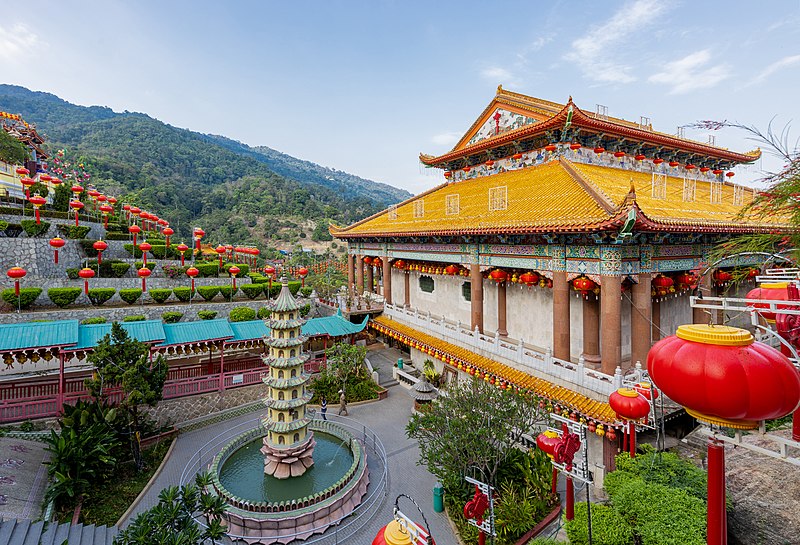
Melaka and George Town, historic cities of the Straits of Malacca have developed over 500 years of trading and cultural exchanges between East and West in the Straits of Malacca. The influences of Asia and Europe have endowed the towns with a specific multicultural heritage that is both tangible and intangible. With its government buildings, churches, squares and fortifications, Melaka demonstrates the early stages of this history originating in the 15th-century Malay sultanate and the Portuguese and Dutch periods beginning in the early 16th century. Featuring residential and commercial buildings, George Town represents the British era from the end of the 18th century. The two towns constitute a unique architectural and cultural townscape without parallel anywhere in East and Southeast Asia. Melaka and George Town, Malaysia, are remarkable examples of historic colonial towns on the Straits of Malacca that demonstrate a succession of historical and cultural influences arising from their former function as trading ports linking East and West. These are the most complete surviving historic city centres on the Straits of Malacca with a multi-cultural living heritage originating from the trade routes from Great Britain and Europe through the Middle East, the Indian subcontinent and the Malay Archipelago to China. Both towns bear testimony to a living multi-cultural heritage and tradition of Asia, where the many religions and cultures met and coexisted. They reflect the coming together of cultural elements from the Malay Archipelago, India and China with those of Europe, to create a unique architecture, culture and townscape. The cities represent exceptional examples of multi-cultural trading towns in East and Southeast Asia, forged from the mercantile and exchanges of Malay, Chinese, and Indian cultures and three successive European colonial powers for almost 500 years, each with its imprints on the architecture and urban form, technology and monumental art. Both towns show different stages of development and the successive changes over a long span of time and are thus complementary. Melaka and George Town are living testimony to the multi-cultural heritage and tradition of Asia, and European colonial influences. This multi-cultural tangible and intangible heritage is expressed in the great variety of religious buildings of different faiths, ethnic quarters, the many languages, worship and religious festivals, dances, costumes, art and music, food, and daily life. Melaka and George Town reflect a mixture of influences which have created a unique architec¬ture, culture and townscape without parallel anywhere in East and South Asia. In particular, they demonstrate an exceptional range of shophouses and townhouses. These buildings show many different types and stages of development of the building type, some originating in the Dutch or Portuguese periods. The integrity of the nominated areas in both towns is related to the presence of all the elements necessary to express their Outstanding Universal Value. The properties have retained their authenticity; listed monuments and sites have been restored with appropriate treatments regarding design, materials, methodologies, techniques and workmanship, in accordance with conservation guidelines and principles. The protective measures for the properties are adequate. Both towns exhibit a generally acceptable state of conservation, although efforts are required to ensure the conservation of shophouses. The management plans and structures are adequate, and can be enhanced through the continuing conservation programs of the State Party.
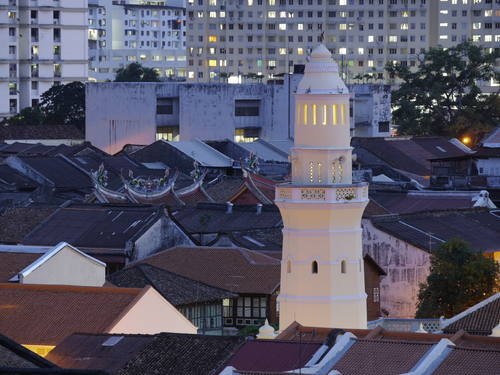
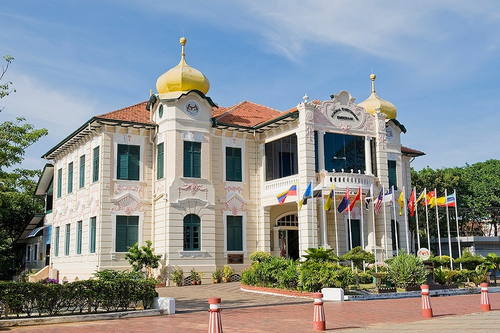
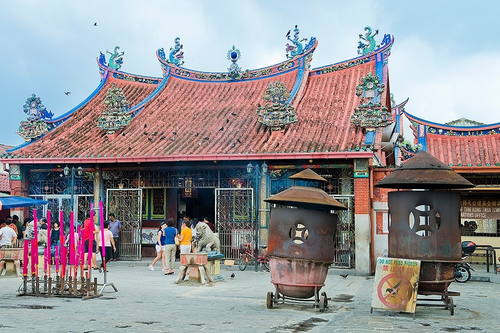
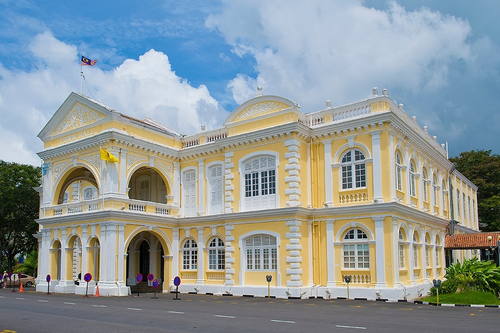
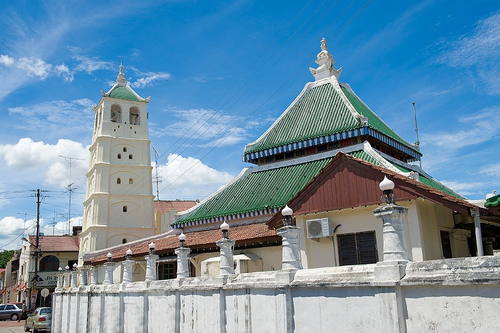
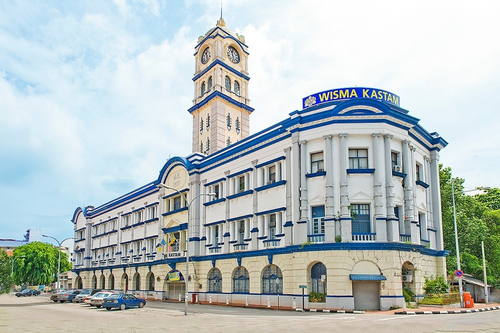
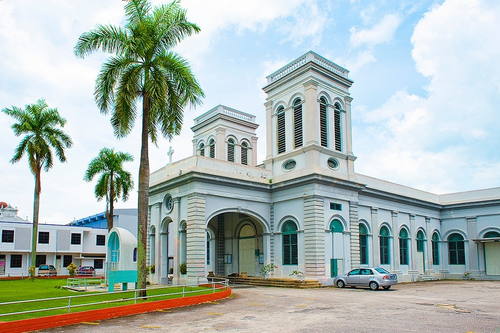
The cities were added to the World Heritage Site List in 2008 at the 32nd session of the Committee held at Quebec City, Canada. Malaysia is one of my dream destinations and once I get a chance to tour the country, I’ll cover these cities along with Kuala Lumpur and the Batu Caves. Eventhough, we haven’t traveled to Malaysia in our posts, we did mention about the Malaysian Cricket Team and also talked about the Cricket World Cup Challenge League A which is scheduled to be hosted by Malaysia. Malaysia has always been one of the best hosts for international sporting events. The only instance when cricket was played at the Commonwealth Games was during the 1998 edition held at Kuala Lumpur. La Liga has kicked off and Sevilla has beaten Real Betis 2-0 in the first fixture. The battle begins between Barcelona and Real Madrid while Atletico Madrid is currently out of the race after they are currently placed on 6th position.
Well, that’s all I have for the day. It was quite an unexpected choice I had to make for the destination. This just begins a series of journeys we are going to make in Malaysia. Job is still at stake and I’m knocking every door in search of a new opportunity. It was also our second post to Eastern Asia after the Prambanan Temple Complex in Indonesia. We will cover other countries in East Asia and Pacific in our upcoming posts. Your valuable suggestions are always welcome in case you wish to see any posts about a specific country in the blog. Once again, thank you for your feedback and support. The most recent notable support of the blog came from the Chinese territories of Hong Kong and Taiwan. Thank you folks. Hope you all enjoyed this short post. Requesting you all once again to stay safe during this time. For now, enjoy the journey across the Straits of Malacca.
